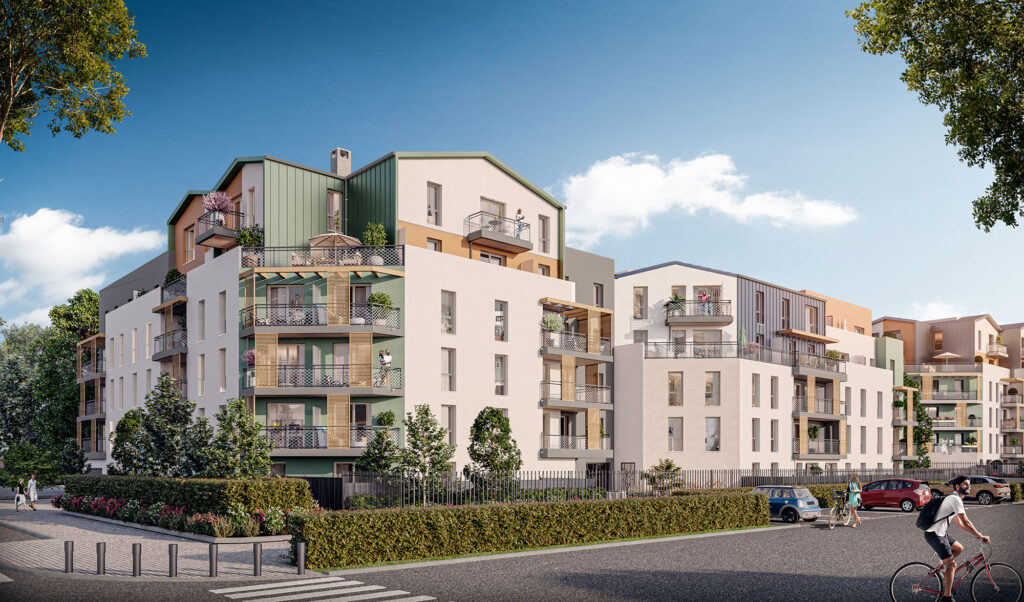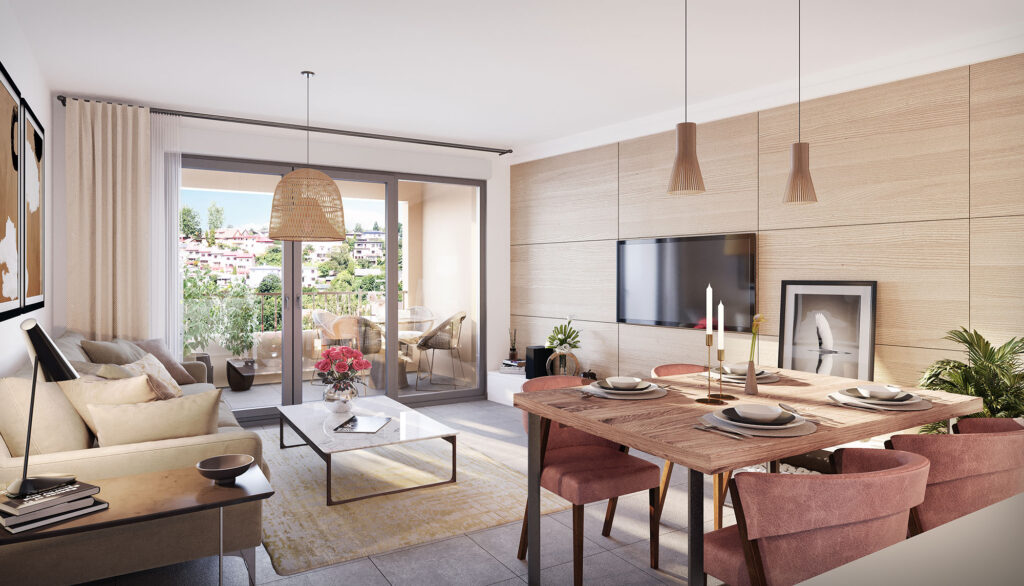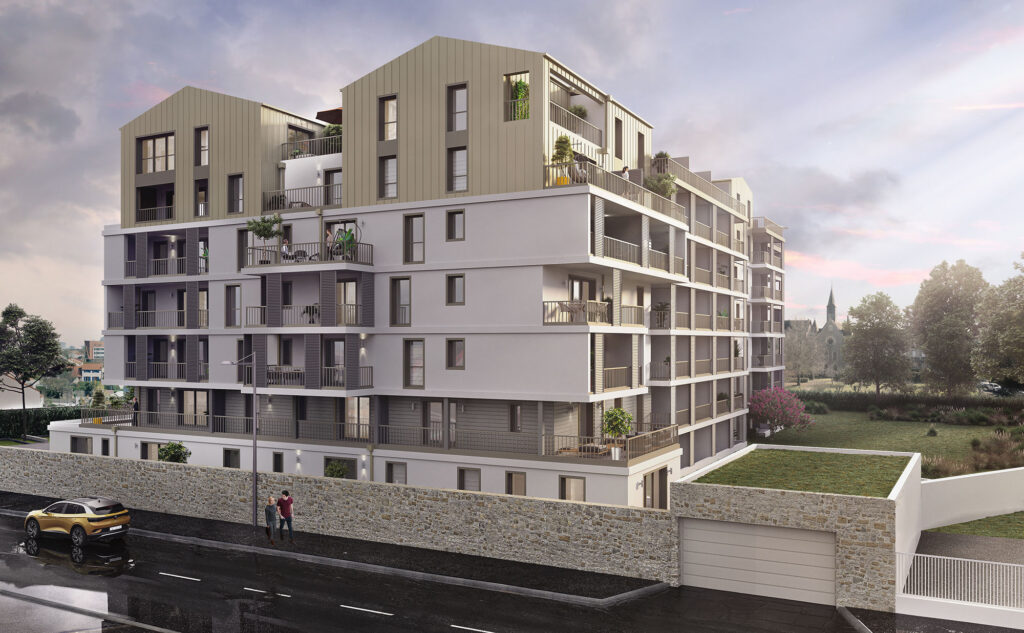Today, 3D modeling software is an essential tool for creating realistic, detailed digital models of objects, spaces, buildings, environments and more.
Yet graphic designers are often faced with the challenge of balancing speed and realism in their 3D modeling projects. How do you optimize the production process and create realistic 3D renderings in a reasonable timeframe?
Here are a few tips for balancing realism and speed in 3D modeling.
Balancing speed and realism in 3D modeling: what's at stake?

Speed and realism in 3D modeling may seem antithetical, since quality often takes time. Yet reconciling the two is possible, and is a delicate and subtle art that only those with sufficient experience can fully master.
Realism: the cornerstone of reliable 3D rendering
The reliability of a 3D model is mainly deduced from its realism. Indeed, only a realistic rendering can meet customers' needs and desires without deception. The performance of a 3D model can only be tested if it is realistic.
Furthermore, realism in 3D modeling is a means of highlighting every detail of the product: functionality, materials, configuration, etc. Theimmersive experience that is the greatest asset of 3D rendering can only be achieved through the realism of the 3D model.
Speed: an essential marketing asset
Speed of production is of the utmost importance, and should not be overlooked in the 3D modeling process. This is because the speed with which the project or product can be presented to prospects and investors is an essential factor in its success.
In the highly competitive field of real estate, for example, where 3D modeling is in great demand, presenting your property ahead of the competition is crucial. It's not uncommon for a customer to compare several real estate developers.
In this case, it's highly likely that he'll give his full attention to the first quality project submitted to him. Indeed, the first image presented to a person always has a stronger psychological impact on that person.
Realism and speed: an imperative balancing act
Speeding up the 3D modeling process is pointless if the resulting 3D rendering lacks realism, which is a guarantee of quality.
This means finding a way to avoid compromising the quality of the 3D model, especially its realism, while working as diligently as possible. With expertise and experience, balancing realism and speed in the 3D modeling process is achievable.
Realistic 3D modelling in no time: how do you do it?
Creating a realistic 3D model in a limited time is possible by following these basic techniques.
3D modeling project assessment and planning
By planning the 3D modeling process in advance, you can minimize the risk of time-wasting errors. The first step to working realistically in 3D modeling in record time is therefore to create a concept sketch, using sketches and reference images.
You can then define all the details of your 3D model in this phase: evaluation of the concept's scope, dimensions of the 3D rendering, styles to be applied, and so on.
This is also the preparatory phase for the 3D modeling process, including workflow, timing and task hierarchy. Sketches and plans will help you to break down your work into manageable stages.
Using shortcuts and preset tools for 3D modeling
To speed up your 3D modeling process while preserving the realism of 3D rendering, you can use shortcuts and task simplification presets . These are quick keyboard or mouse commands that allow you to perform repetitive gestures in your 3D modeling software.
To make your work easier, you can create these shortcuts to switch between modes, add effects to your model, and so on. You can also create predefined settings for materials, textures and lighting in your 3D rendering.
Shortcuts and presets also save you from having to adjust each element manually.
Mesh optimization
Mesh optimization is an ally of realism in 3D modeling. This technique involves reducing the number of polygons or triangles that make up the model, without compromising appearance or functionality.
This involves optimizing the network of vertices, edges and faces that make up the shape of the 3D model.
To optimize the mesh, you can use retopology, decimation or baking techniques.
Using these methods, you can create a low-poly mesh that will preserve the shape and detail of your 3D rendering while enhancing its performance. Low-poly meshing lets you create realistic, efficient 3D animation at considerable speed.
Using modifiers
Modifiers are operations that can change the appearance of a 3D model, such as bending, twisting or smoothing. This feature helps you create complex models, while retaining the realism of 3D modeling, at incredible speed.
Modifiers can be applied to a mesh without transforming its original geometry.
UV mapping and texturing
UV mapping and texturing are processes for applying images, colors and patterns to the surface of a 3D model. They can be used to enhance the realism of 3D modeling, with the added bonus of saving time and resources.
UV mapping and texturing save the designer the trouble of modeling every detail, creating the illusion of depth and shading. Create or add the right textures for your 3D model with online software and libraries.
However, as your 3D model has been created in record time, you need to pay particular attention to testing and fine-tuning to ensure that your rendering is truly realistic.
Styling and realism: how to save time on a 3D model?

The use of stylization can be an effective way of balancing the realism of 3D modeling with speed. However, stylization needs to be moderated in all phases of 3D modeling.
Stylization and realism in 3D modeling: complementary methods
Realism is the close, faithful representation of the 3D model's physical appearance in relation to reality. Stylization, on the other hand, is the exaggeration or simplification of the model to create a specific artistic effect.
Its main advantage is the speed with which it can be implemented, making it an indispensable time-saving technique. In fact, stylization makes it possible to use models with lower polygons, simplified textures and faster methods.
It also eliminates unnecessary details and focuses customers' attention on essential features. Combined with realism, stylization helps establish a unique identity for your 3D model, with colors, shapes and symbols that the public can understand.
To balance the two techniques, simply take into account the product's function, type, medium and market.
Balance between realism and stylization in the skeleton
The skeleton is the underlying structure of a 3D model. It includes joints and bones. The skeleton defines how a 3D model can move, bend, twist and rotate.
To balance realism and stylization in the skeleton, consider the number, size, shape and orientation of bones and joints.
If the realistic skeleton includes the anatomy of the 3D model, add extra bones to create stretching effects for your model, or rotate joints to create cartoonish proportions of your model.
This will overcome the realism limitation of 3D skeletal modeling. However, this solution does not apply systematically to all 3D projects.
Balance between realism and stylization of the 3D model's skin
As for the skin, which is the outer layer of the 3D model, it can determine how the 3D model may deform, wrinkle or swell. To balance realism and stylization in the skin, consider its weight, influence and stress.
To establish realism in 3D skin modeling, opt for smooth, natural skin deformation, but for the stylized side, adjust the weight, influence and stress of the skin and create muscular or fat effects, with slightly abrupt deformation.
In the end, high-quality, realistic 3D modelling always takes a fair amount of time. But these procedures can save a few hours or days of work without sacrificing realism.
Do you have a 3D project in mind?
Contact us .








